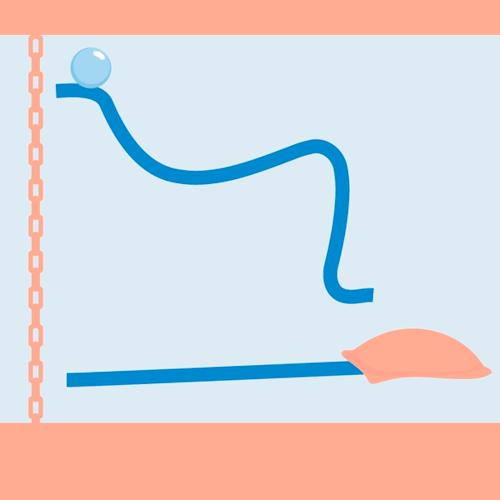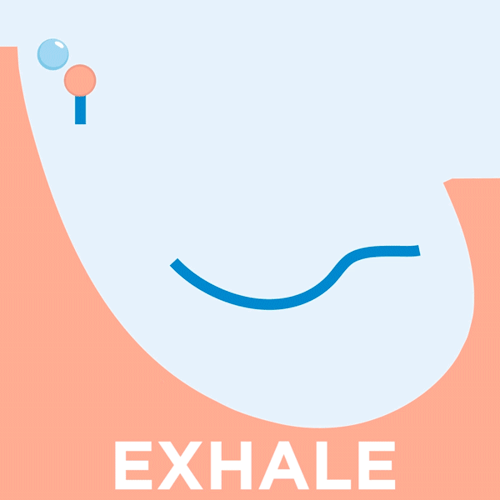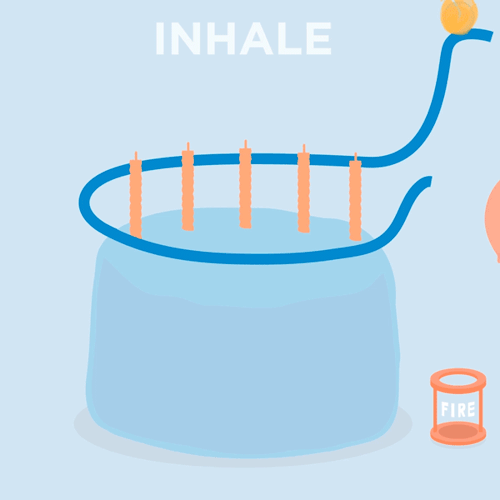Finally Vihart Post A Video Again!

Finally Vihart post a video again!
More Posts from Mrvmt and Others
Beautiful, where can I get my hands on one of these? :)



Dragon Fractal - Level 5
If you take each of the 4 sides of a square and modify the angle of the dragon fractal as you go up, you get this shape. I’m still fighting the 3d models to get a nice smooth version.
Wow, it’s somehow really relaxing in this!


Koalas to the Max
Mike Lawler and Dave Radcliffe reminded me of this great goofy site: Koalas to the Max. 4x the fun of your usual dots site.
Glad to see your back. Love your work. As always, keep up the good job! And btw, nice covergirl photo ;)






Rough draft of a sculpture illustrating the electric field lines between two equal and opposite charges.
(Hi! I’m still alive, sorry for ghostin ya tumblr. I stopped posting because my reclusive tendencies have gotten really out of control over the past year or so, but I’m trying to take little baby steps to quittin my bullshit so bear with me! Still makin math art like crazy, so I thought I’d start with sendin u this lil ditty I whipped up a couple weeks ago. Plenty more where this came from, I promise!)
Does this post explain this aswell? https://www.youtube.com/watch?v=uENITui5_jU

The Strobe Light Conundrum
The post - Illusion of Perception obviously confused a lot of people since I have been getting a lot of requests to explain it again.
Let me try it again with another animation.
The setup
The illusion of falling droplets is created by a pump which is pushing out the water droplets at a fixed rate. ( call it X ) - Does NOT change.
Changing the frequency of the strobe light ( call it Y ) is the integral part of the illusion.

The flow is similar to that of your shower head. The water droplets are continuously falling down. With the strobe light, we are just illuminating the droplets at different instances of time.
When X = Y —> The droplets appear stationary.
Imagine yourself to be sitting on top of the hose and watching every drop fall through. Whenever the droplet of water is about to leave the hose, the light flashes. This renders the droplet as stationary.
Let us call the distance between the droplets as L.

When Y > X — > The droplets appear to move up.
Now, the strobe light flashes a little too quickly than the rate of the drop falling. This gives us the illusion of droplets moving up since you are flashing the light before the droplet has traversed the distance L.


When Y < X — > The droplets appear to move down.
Now, the strobe light flashes a little slower than the rate of the drop falling. This gives us the illusion of droplets moving down since you are flashing the light after the droplet has traversed the distance L.


Thank you so much for expressing your concerns and I apologize if it had confused you. I hope this post made it up
Have a good day :)
EDIT - Here is the actual gif from the illusion of perception post.

So pleasing for the eye to watch!

The Trefoil
(cf.)
Numberphile (https://www.youtube.com/channel/UCoxcjq-8xIDTYp3uz647V5A) Got some good videos on the subject.
Heres one that introduce the topic: https://www.youtube.com/watch?v=aqyyhhnGraw

Did you know that there’s a whole branch of topology called knot theory studying knots?
Find out more here: https://en.m.wikipedia.org/wiki/Knot_theory
Welcome to my world of dyslexia... :)
When I'm halfway through a sentence and suddenly realise there is no way out of the grammatical crater I have dug myself







I’ll post more here: instagram.com/nathanwpyle
Take a deep breath.

So I just finished my CALC 2 class with the highest marks in the class and I wanted to put together a “guide” on how to study for calculus. It doesn’t matter if you are taking AP Calculus or Calculus in college, this guide should be a general overview but I will mention some specifics to AP Calc. *Picture from my Calculus lecture.
General Tips
Buy the AP CALC review books. Regardless of whether you are in college calculus or actually in AP Calculus, the review books are great in condensing materials and having good examples.
Create your own cheat sheet. Every time you learn a new formula or theorem, write it down in a cheat sheet. This forces you to recall the information constantly.
Know your common derivatives and common integrals like the back of your hand.
Fundamental Theorem of Calculus, Part I & II? Yeah, it’s fundamental. Need to know that.
Common limits? Yep, that too.
Know your pre-calc and algebra by heart. The hardest thing about calculus is not the formulas and theorems, but recalling past materials to solve a problem. If you could easily recognize trigonometric identities, you would be well set for the class.
Know what trig graphs look like and what they approach, etc.
Learn how to do the math without a calculator. Some professors don’t let you use calculators on the tests and when you are become too dependent on the calculator, you tend to forget how to do simple addition/subtraction and multiplication/division. Also, there is a non-calculator portion to the AP Calculus Exam, so don’t make your calculator your crutch.
Practice every day + do your homework. A little practice everyday goes a long way and doing your homework (even if it doesn’t count as a grade) can be a drastic way of improving your grades because chances are, your teacher knows you probably aren’t going to do the homework and will have test questions very similar to the homework questions.
Show all your work. Write all the steps out. If you make a mistake mentally, your whole answer will be wrong. To decrease the chances of loosing points for careless errors, label everything, even if it tedious. Also, work shown can count towards partial credit on tests.
Practice the problems from your textbook + problems outside your textbook.
Understand and review old tests. When you get your tests back, redo the whole test on another sheet of paper. Try to understand where you went wrong. Was it a simple math calculation error? Did you do the derivative wrong? Was the theorem wrong? Did you forget a step like checking for conditions to apply L’hopitals Rule or Alternating Series Test for Convergence? Whatever it is, go through the entire test (yes, even the ones you got right) and re-do it.
Ask for help when you don’t understand something. Solving tough calculus problems are easier when working with a group on a white board because you get a fresh set of eyes and a new mindset/approach to a problem. If you cannot tackle a problem, regardless of how many ways you have tried, it’s best to ask someone who already knows how to do it.
Resources for AP CALC
Buy review books. Honestly, this is self-explanatory. I usually would go with a Barron review book, but hey, what ever works with you.
Do the previously released AP Calc exams. If you are a BC student, do the release exams for both AB and BC for more practice.
Previously released AB Exams
Previously released BC Exams
Step-by-step explanations for free response questions release
AB Study Guide
Cheat Sheets + Other Resources
I advise you to print out the cheat sheets and place it in the front of your calculus binder/notebook or where it can be easily accessed.
Cheat Sheets
AP Calculus Stuff You Must Know Cold
This 2-page cheat sheet is honestly god gifted and I advise you to print it out and laminate or something and put it in the front of your calc binder/notes. Will definitely save your life.
Algebra Cheat Sheet
Trigonometric Cheat Sheet
Calculus Cheat Sheet
Derivatives and Limits
Integrals
Online Tutorials + Videos
Khan Academy
Differential Calculus
Integral Calculus
Paul’s Online Math Notes
HippoCampus
Online Calculators
Symbolab’s Calculus Calculator
The most beautiful thing to ever exist when you are checking your answers or looking for the steps on how to do a problem.
Don’t rely on it too much. Actually learn how to do it.
Wolfram Alpha
Implicit Differentiation Calculator
Desmos Online Graphing Calculator
Bet you don’t know how to graph an x-function on that TI-84 without solving it out for y. But it’s cool, neither do I. That’s why I rely on Desmos’ Online Graphing Calculator.

Greenpeace #clickclean campaign GIFs ‘Wind Turbine Likes’